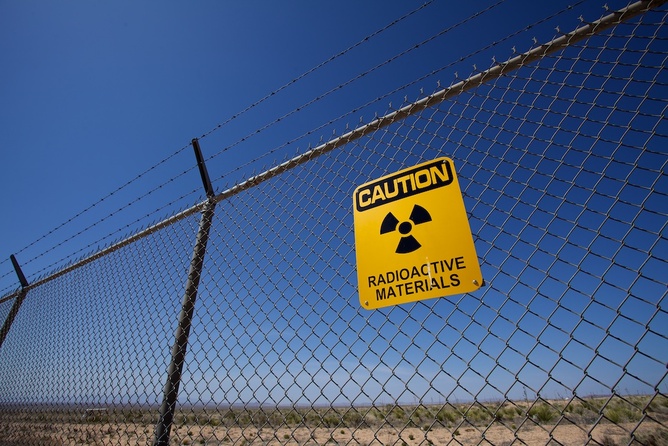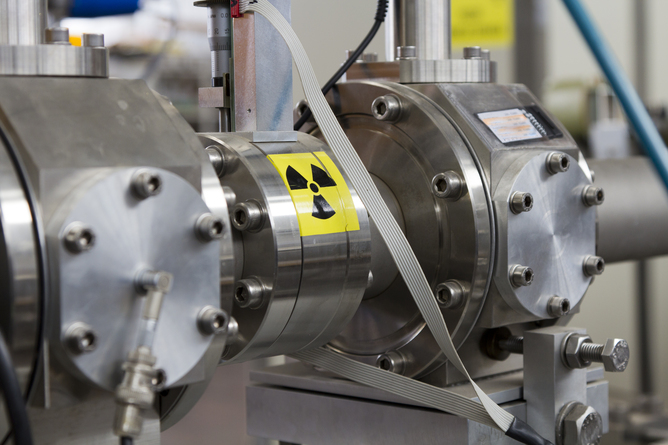
Debunking Myths on Nuclear Power (It's Not For Making Bombs) (Op-Ed)

This article was originally published at The Conversation. The publication contributed the article to Live Science's Expert Voices: Op-Ed & Insights.
It is the received wisdom that nuclear weapons and nuclear power are inseparable. Consequently, any country that builds a civilian nuclear power station is able to build an atomic bomb within a couple of years.
Clearly there are overlaps in knowledge and technology between the civil and military nuclear industries. How closely is power generation connected with weapons production?
Experiments in the 1960s, and a student project in the 1970s, showed that a well-informed scientist could get close to recreating the design of Fat Man, the atomic bomb used at Nagasaki.
Information about the physics of a nuclear weapon’s core is probably not the limiting factor in nuclear proliferation. The critical part of a nuclear bomb, which sets it apart from any other weapon, is the presence of an amount of a material (known as fissile material) that is capable of maintaining a nuclear chain reaction (called the critical mass). This usually means either uranium or plutonium.
While uranium is naturally occurring, plutonium is for all practical purposes a synthetic element – only produced by man.
However, it’s not as simple as digging up sufficient uranium ore and extracting the uranium metal. Only one isotope of uranium (235U) and one of plutonium (239Pu) can conveniently be used to manufacture a weapon (I’ll explain what the numbers mean below).
Sign up for the Live Science daily newsletter now
Get the world’s most fascinating discoveries delivered straight to your inbox.
235U only occurs as around 1% of natural uranium. The other 99% is 238U.
To make a practical uranium bomb, about 60kg of 80% pure 235U is needed. There are several methods for separating 235U from 238U. All methods are complex and the details of some remain classified.
Heavier isotope, smaller bomb

You probably noticed that the superscript 238 (as in 238U) is one less than 239 (from 239Pu) – this is important.
Inside a nuclear reactor there is a large number of free particles called neutrons. It is the neutrons that mediate the nuclear reactions.
When a neutron hits the nucleus of a 235U atom, the nucleus usually splits into two large pieces and releases several new neutrons. This is the process known as fission.
A neutron hitting a nucleus does not always cause fission. 238U can absorb a neutron and after a couple of other reactions become 239Pu. This process is known as breeding.
Again this is significant – compared with 235U’s bare critical mass of ~50kg, the bare critical mass of 239Pu is around 11kg. In other words, the amount of material needed to make a bomb with 239Pu is a fifth that of 235U.
These figures can be lowered to around 4kg 239Pu for very advanced designs. Fat Man used around 6.2kg and some advanced methods, such as using a tamper and polonium based neutron boosting. The potentially much lower critical mass of plutonium makes it the preferred material for weapons production.
Another advantage of plutonium is that it has different chemical properties and reactivities to uranium. So, rather than needing sophisticated isotope separation technology, the two metals can be separated by well-known metal processing chemistry (such as the PUREX method which involves dissolving them in acid, reacting both metals with an organic compound, extracting the organic compounds into kerosene and selectively reducing the plutonium so that it can be re-extracted back into water).

Side effects of breeding plutonium
239Pu is fissile, if a neutron hits it; about 75% of the time it splits. The other 25% of the time, the nucleus captures another neutron to become 240Pu.
240Pu is much less likely to capture another neutron. Therefore, over time the amount of 240Pu compared with 239Pu in a reactor core will go up. This isn’t a problem as such for the reactor (although it can create waste issues), but is a huge problem for nuclear weapons manufacture.
Induced vs spontaneous
Above I described induced fission. The question left hanging is – where does the first neutron in the chain come from?
Some atoms, when they undergo radioactive decay, do not follow their usual pathway (alpha decay for 239Pu and 240Pu). One in five million 240Pu atoms and one in five trillion 239Pu atoms undergo spontaneous fission, meaning they break up without warning and release some neutrons. These events are where those “first neutrons” can come from.
The high spontaneous fission rate of 240Pu acts as a kind of poison in the core of nuclear bombs. More than about 7% 240Pu and the likelihood that the warhead won’t work increases, and the dangers of handling the more radioactive 240Pu become too great.
The 7% limit is reached in a typical nuclear reactor after about 90 days (depends on the reactor design and the 235U enrichment). Typical commercial power reactor fuel cycles are around two years. If the fuel cycle is shorter the electricity becomes uneconomic.
All this means that the plutonium than can be extracted from the fuel rods of a commercial nuclear power reactor is not suitable for making nuclear weapons.
Historical perspective

There are five declared and four other nuclear-armed countries (assuming Israel’s warheads detonate). There are 31 nations with nuclear power stations (and 58 with research reactors). Only seven of the nine nuclear-armed countries have civilian power programs.
All of the technical factors can be circumvented with sufficient time and money. Uneconomic fuel cycles can be run and warheads built with high levels of radioactivity. However, no country has developed indigenous nuclear weapons after deploying civilian nuclear power stations.
Historically, if a country wants to produce a nuclear bomb, they build reactors especially for the job of making plutonium, and ignore civilian power stations.
Martin Boland receives funding from and collaborates with the Australian Nuclear Science and Technology Organisation.
This article was originally published at The Conversation. Read the original article. The views expressed are those of the author and do not necessarily reflect the views of the publisher. This version of the article was originally published on Live Science .









